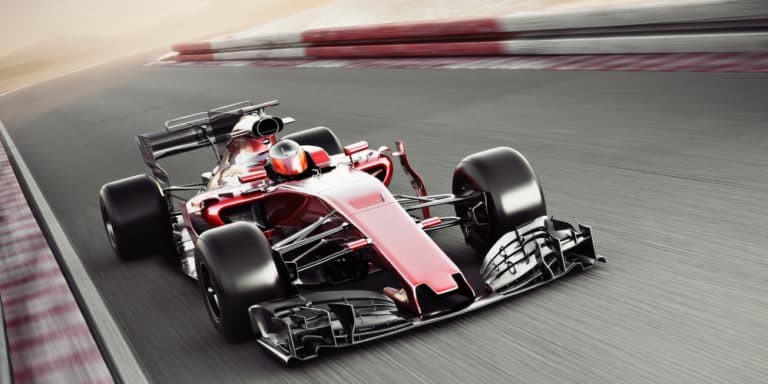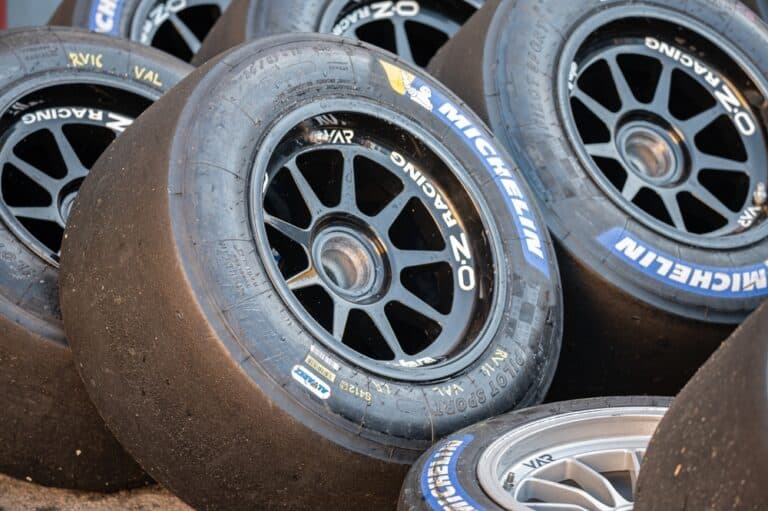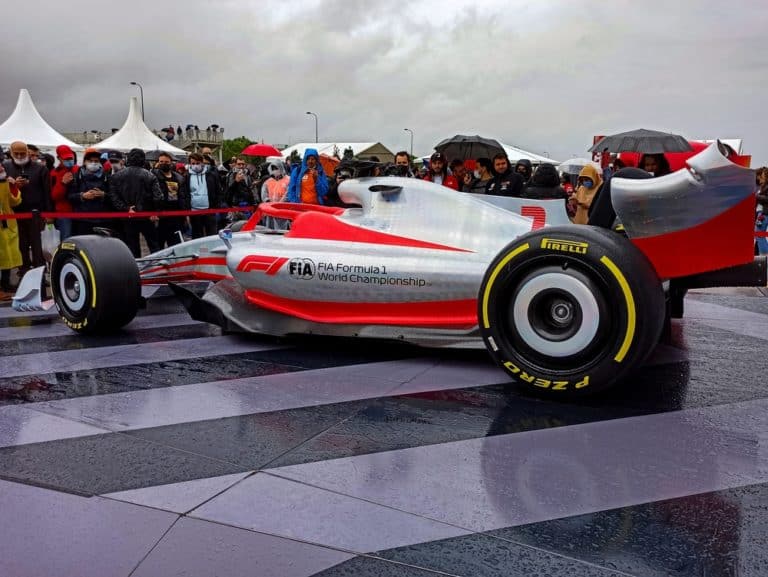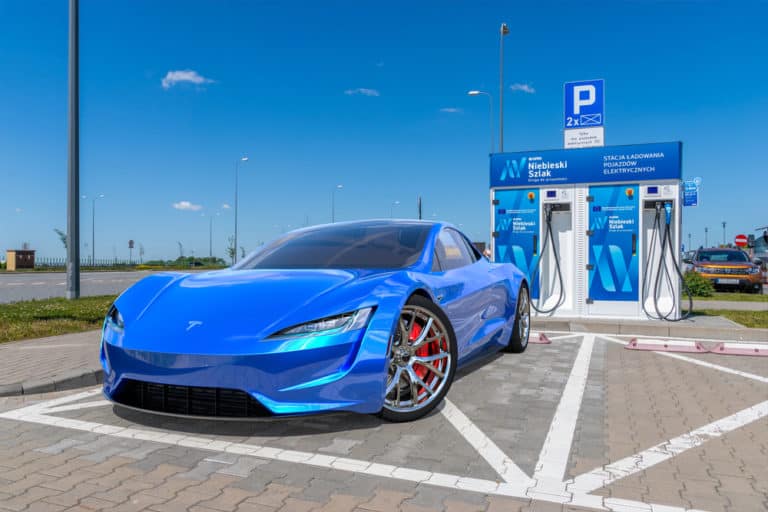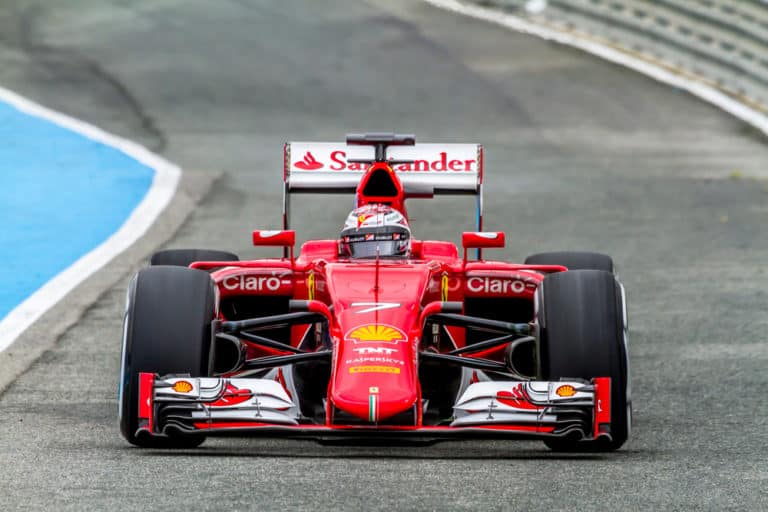From the early halcyon days of F1, with iconic brave and skilled drivers like Sir Sterling Moss, Juan Manuel Fangio, Jim Clark, and Sir Jackie Stewart through to the modern era’s gladiators like Michael Schumacher, Sir Lewis Hamilton, and Max Verstappen, the sport has captured the imagination of millions of fans.
Modern Formula 1 cars use a conventional rack and pinion steering that has power assistance through a hydraulic system piggybacked on the steering rack. It provides the help needed to turn the steerable wheels while providing tactile feedback to the driver.
While American motor racing adopted Speedway-style circuits, F1 chose more complex and intricate tracks with a mix of high-speed straights interspersed with dramatic braking zones, complex corners, and varying track styles.
If you’re looking for some F1 merchandise, check out the awesome stuff at the official F1 store here.
Why Do F1 Cars Have Power Steering
Negotiating a modern F1 track requires the cars to produce massive, changing, and sometimes contradictory forces.
The F1 cars must have chameleon-like abilities where they can.
- Achieve speeds of +-300 km/h.
- Braking systems capable of slowing to 50 km/h.
- The ability to turn sharp corners with a radius of 10m (like the Fairmont hairpin at the Monaco Grand Prix).
- Accelerate back to high speed away into the straight.
The actions must be repeatable for up to 70 laps in the race.
F1 cars need very responsive systems, which include.
- Immediate throttle response
- Very effective fade-free braking (which, incidentally, is not assisted)
- Massive levels of traction
- High straight-line speeds
- Incredible downforce
- Precise steering control.
With the high speed, wide tires, and strong downforce, a steering system, which did not have power assistance, would be very heavy and make the car virtually undrivable.
F1 drivers are athletes who operate at peak levels of fitness.
These sportsmen are expected to drive at the very limit of the car’s capabilities and traction. At the same time, they are subjected to a braking 5g braking force, 2g’s while accelerating, and 4 to 6g’s through the corners, with very high levels of downforce, for up to 2 hours at a time.
Added to this is that the cockpit temperature can exceed 112 degrees Fahrenheit. If the steering were manual with no power assistance, the effort to control the car in these conditions would be too great.
The Type Of Steering System Used In F1
First invented by BMW in 1930, rack and pinion steering systems are the most used steering systems in modern cars.
There are many benefits of rack and pinion steering, these include.
Rack And Pinion Steering Is More Accurate
They are essentially made up of a worm gear (pinion) that rotates on a threaded rod; they react to minimal steering inputs and provide precise directional control.
Precise steering inputs are stock in trade for F1 drivers, and the simple rack and pinion steering system is the optimal solution.
A Rack And Pinion Steering Produces A Lighter Steering Feel
Because it is a threaded rotational force that makes the steerable wheels adjust their angle of direction, the geared effect of the pinion on the racks threads reduces the turning force required by the driver.
Simply put, the steering is lighter and easier to manipulate.
Although F1 cars do have mechanically assisted power steering, the basic design of a conventional rack and pinion steering means that the parts which make up the hydraulic assistance can be lighter and don’t have to be “heavy-duty.”
A Rack And Pinion Steering Weighs Less
There are fewer parts in a rack and pinion steering system, which results in a lower weight.
All weight saving in F1 is critical because it changes the ratio between the power and weight of the car. The bigger the ratio (higher engine power/lower weight), the faster an F1 car will accelerate.
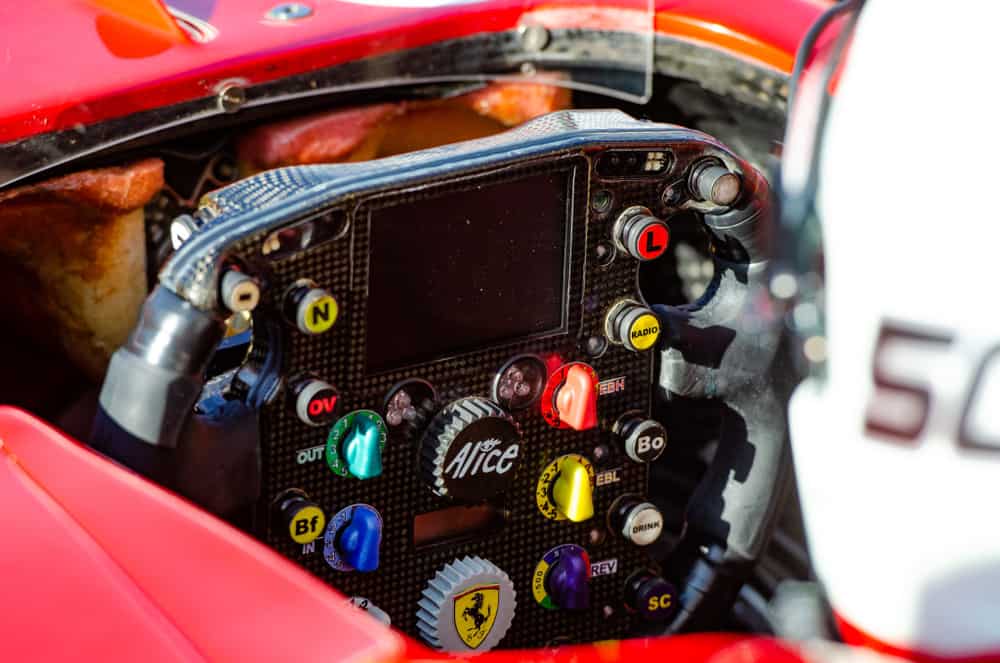
How Does A Formula 1 Rack And Pinion Steering Work?
A rack and pinion steering system works very effectively and operates as follows.
- Turning the steering wheel rotates the
- attached steering shaft.
- This action turns a worm gear which is called the pinion.
- The worm gear is located on a length of metal (the rack) which has a tread cut into it.
- The rack moves either left or right when the pinion (worm gear) is rotated, depending on the steering input’s thread.
- The rack is linked to the steerable wheels through the tie rods via a kingpin.
- As the pinion (worm gear) moves the rack either left or right, the tie rod forces the wheels to rotate.
A hydraulic piston in the hydraulic cylinder provides power assistance.
The piston is connected to the steering rack. When the steered wheels are pointed straight, the piston is in the middle of the cylinder.
There are two fluid ports on either side of the piston. When the steering wheel is turned, the side corresponding to the steering input opens and supplies high-pressure fluid to the cylinder; this forces the piston to move on the rack and helps the pinion turn the wheel.
Why Doesn’t F1 Use Electrically assisted Power Steering?
Road-going vehicles generally employ advanced electrically assisted power steering systems.
As alarming as it may sound, some modern cars use fully electrical steering systems. These don’t have a direct mechanical connection to the front wheels. The rotation of the steering wheel sends the corresponding commands to a steering motor which adjusts the wheels in precisely the direction required.
Other vehicles use a regular rack and pinion system, assisted by electrical motors.
Both versions can be programmed to produce a specific steering style and can change the steering forces depending on the speeds at which the vehicle is driven.
The downside, however, is that there is no feedback transmitted from the road surface to the steering wheel. Exceptionally talented F1 drivers use every one of their senses to maximize track times, and steering feedback is one of the most important.
The subtle tactile responses through the steering wheel signal
- The car is about to over or understeer.
- The torque effect of acceleration.
- The brakes start to lose traction.
Not providing feedback makes electrically powered steering systems unworkable in F1 cars.
Conclusion
Although F1 cars represent state-of-the-art design and engineering, all engineering decisions require compromise. In F1’s case, the result is heavy steering, which needs power assistance to make it workable.
The result is that a car that can routinely achieve 300 km/h on the track remains controllable through high-speed corners at 200 km/h and yet is just as capable through very tight slow bends. Without a power steering system, these metrics would be impossible to achieve.
References
- https://www.carthrottle.com/post/what-actually-is-rack-and-pinion-steering/
- https://www.topgear.com/car-news/formula-one/here-are-10-best-ever-formula-1-drivers
- https://www.motorsport.com/f1/video/f1s-mechanical-power-steering-system-explained/372437/
- https://www.popsci.com/f1-racing-steering-wheel-complicated/

